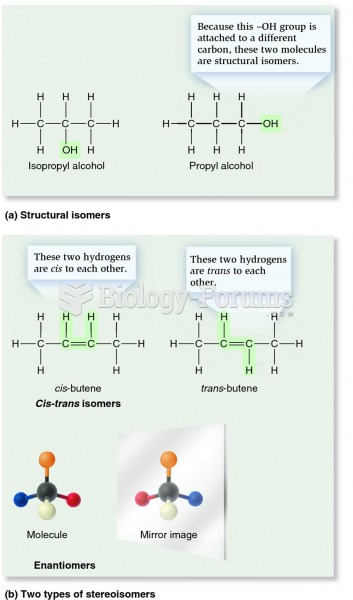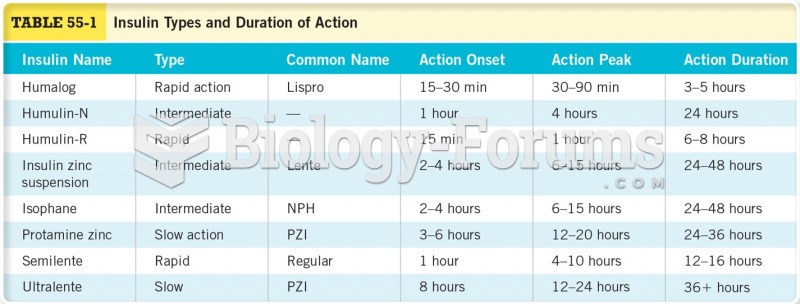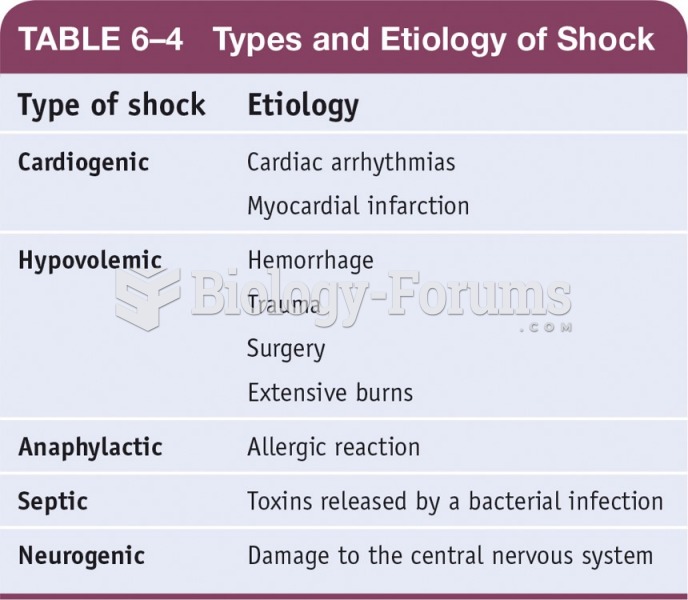|
|
|
The B-complex vitamins and vitamin C are not stored in the body and must be replaced each day.
The first documented use of surgical anesthesia in the United States was in Connecticut in 1844.
Green tea is able to stop the scent of garlic or onion from causing bad breath.
Historic treatments for rheumatoid arthritis have included gold salts, acupuncture, a diet consisting of apples or rhubarb, nutmeg, nettles, bee venom, bracelets made of copper, prayer, rest, tooth extractions, fasting, honey, vitamins, insulin, snow collected on Christmas, magnets, and electric convulsion therapy.
Only 12 hours after an egg cell is fertilized by a sperm cell, the egg cell starts to divide. As it continues to divide, it moves along the fallopian tube toward the uterus at about 1 inch per day.







